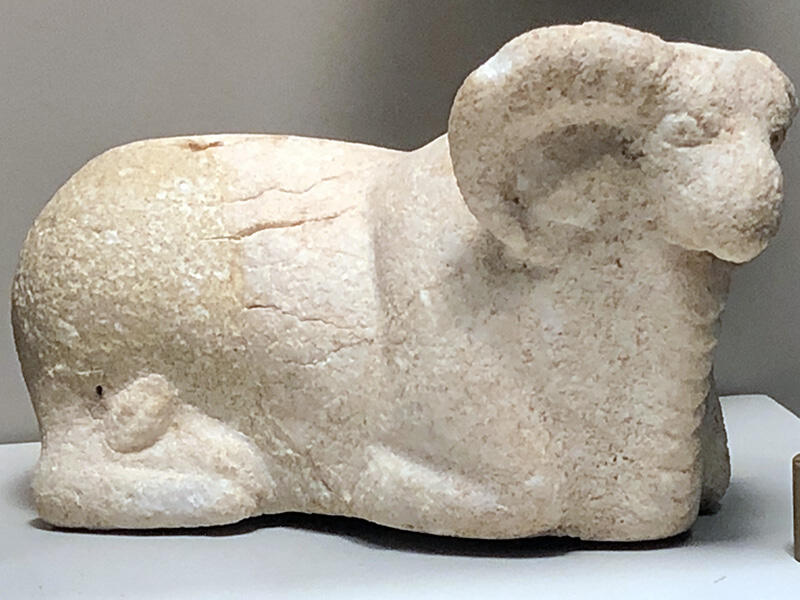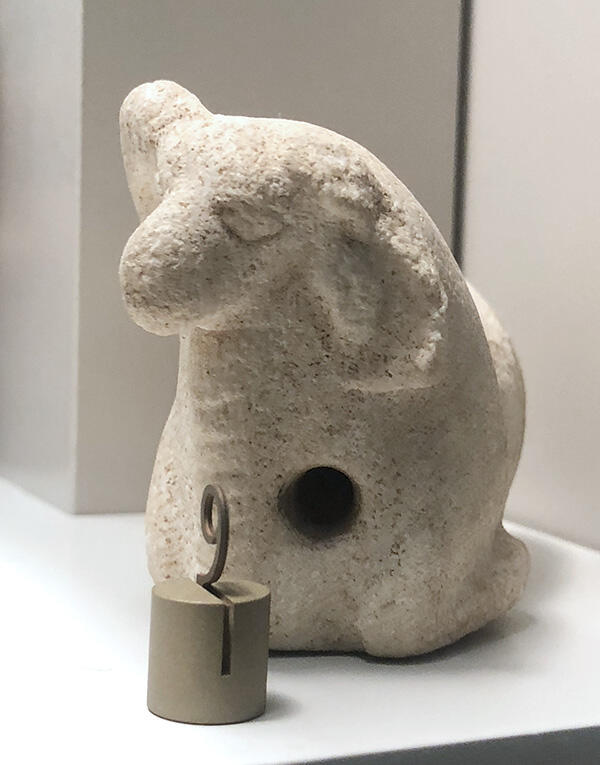August 17th, 2021
"The abundance of animal figurines at the major [Indus] urban centers suggests that they were commonly used in household and public rituals," writes Mark Kenoyer (Ancient Cities, p. 118). "All major domestic and wild animals are represented by terracotta figurines, but only a few animals were made in stone or faience. Two fragmentary stone sculptures of a seated ram were recovered from excavations at Mohenjo-daro," he continues; one was a faience amulet with a hole drilled through it, and there was also a larger sandstone of a seated ram [Image 3].
Ernest Mackay too noted how "model animals of stone are much rarer even than those of bronze or copper," (Further Excavations at Mohenjo-daro, I., p. 284), and thought that "the ram certainly appears to have been sacred" (p. 291).
So it was a nice surprise to bump into a beautiful, large alabaster ram figurine at the Guimet [1]. Intact and regal with a slightly twisted head (similar to another beautiful exemplar at the Metropolitan Museum), with the same curious feature as others. There is a large hole drilled in the front [2] that does not pass through the body. For smaller ram amulets, the hole would allow string or rope to pass through and the owner to wear it, but for such a large and heavy object, what could the hole's function be? Was it mounted somewhere, on something?
More on the Guimet's Indus and Amri collections.






